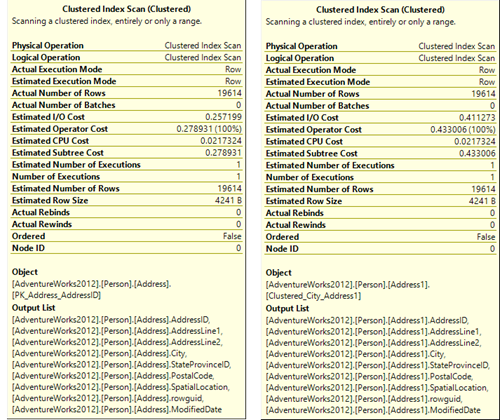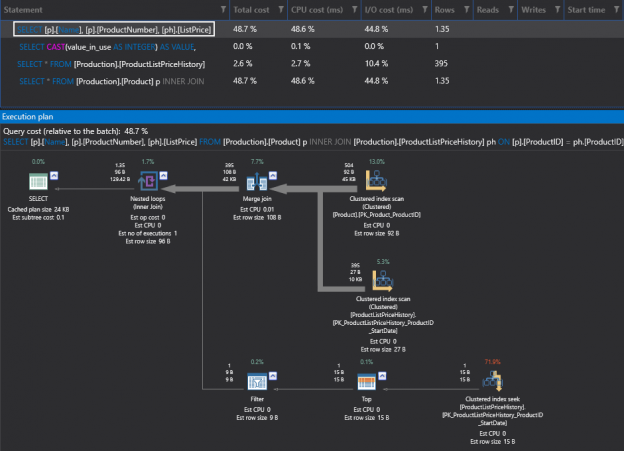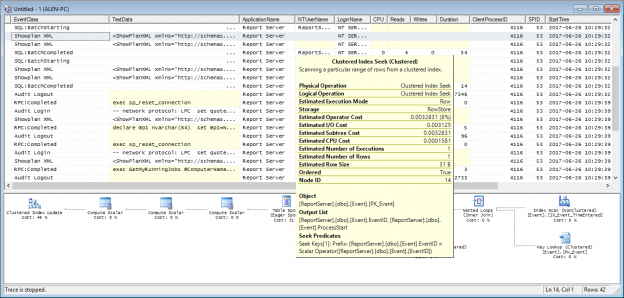Milena Petrovic
- Using custom reports to improve performance reporting in SQL Server 2014 – running and modifying the reports - September 12, 2014
- Using custom reports to improve performance reporting in SQL Server 2014 – the basics - September 8, 2014
- Performance Dashboard Reports in SQL Server 2014 - July 29, 2014
Using custom reports to improve performance reporting in SQL Server 2014 – the basics
September 8, 2014Performance Dashboard Reports in SQL Server 2014
July 29, 2014SQL Server Management Studio performance reports
July 24, 2014Poor SQL query design – a SQL query performance killer – the basics
May 23, 2014Read more »
Inaccurate SQL Server statistics – a SQL query performance killer – updating SQL Server statistics
April 28, 2014Inaccurate SQL Server statistics – a SQL query performance killer – the basics
April 22, 2014
Poor database indexing – a SQL query performance killer – recommendations
April 14, 2014Frequent query recompilations – a SQL query performance killer – detection
April 11, 2014Frequent query recompilations – a SQL query performance killer – introduction
April 9, 2014Common SQL syntax errors and how to resolve them
April 2, 2014SQL query performance killers – understanding poor database indexing
March 31, 2014SQL Server query execution plans – Examples with the WHERE clause
March 21, 2014SQL Server query execution plans – Examples with the SELECT statement
March 19, 2014
SQL Server query execution plans – Understanding and reading the plans
March 17, 2014In the previous parts of this series, we explained what SQL Server query execution plans were, why they should be used, and presented various methods to show them. In this part, we will explain the symbols used, how to read the plans, and how to use these plans in performance analysis and troubleshooting
Read more »
SQL Server query execution plans – Viewing the plans
March 15, 2014In the SQL Server query execution plans – Basics, we described the query execution plans in SQL Server and why they are important for performance analysis. In this article, we will focus on the methods for opening the plans, both actual and estimated ones
Read more »SQL Server query execution plans – Basics
March 15, 2014Why is query execution important for SQL Server performance?
SQL Server performance monitoring depends on the performance goals. The first step in monitoring is to determine optimal performance for your server and create performance trends based on the captured metric information. If performance is not satisfactory, it’s necessary to diagnose performance problems and find their origin. This involves testing how different queries and applications affect performance Read more »SQL Server alerts in troubleshooting performance issues: How to create and use SQL Server alerts
March 15, 2014Before creating a SQL Server alert, make sure that Database Mail and SQL Server Agent properties are properly configured Read more »
SQL Server alerts in troubleshooting performance issues: SQL Server alerting basics
March 14, 2014Why is SQL Server alerting important?
To be aware of what’s going on with your system and how SQL Server performs, monitoring is necessary. However, just monitoring might not be enough. Being notified about a performance issue whenever a specific SQL Server counter meets a threshold value, or a specific event occurs, boosts monitoring usability. These notifications enable DBAs to be aware of every important system performance change as soon as it happens, and therefore they can act immediately to fix the issue and prevent further problems Read more »Troubleshooting SQL Server issues with sys.dm_os_performance_counters
March 13, 2014sys.dm_os_performance_counters
sys.dm_os_performance_counters is a system Dynamic Management View (DMV) that returns one row for each SQL Server performance counter. It’s useful for obtaining information about current performance counter values. These counter values are also shown in Windows Performance Monitor, besides other operating system counters Read more »A DBA guide to SQL Server performance troubleshooting – Part 2 – Monitoring utilities
March 13, 2014A DBA guide to SQL Server performance troubleshooting – Part 1 – Problems and performance metrics
March 13, 2014SQL Server network performance metrics – The most important metrics
March 13, 2014SQL Server performance tuning using Windows Performance Monitor
March 12, 2014Windows Performance Monitor basics
March 12, 2014Read more »